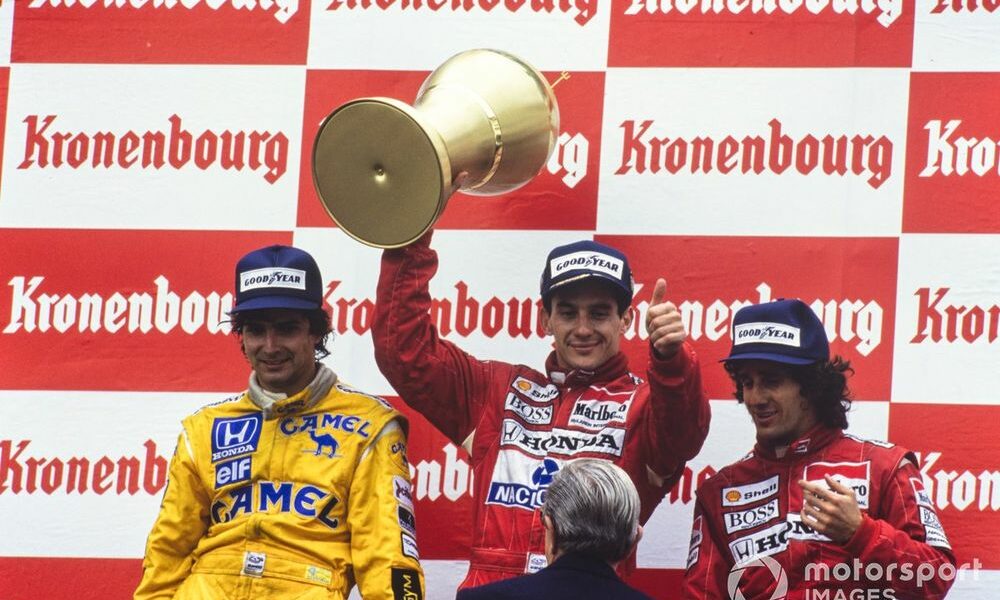While F1 trophies must stick to some rules – for example, showing the F1 logo, official name of the competition and finishing position, as well as stipulations regarding height and weight – there’s a lot of freedom offered to the designers.
This has led to some unique designs in recent years; however, those rules haven’t always applied – meaning that in the past some grands prix have gotten really creative with its trophy design. Here are 10 of the most peculiar in F1 history.
San Marino Grand Prix – Golden trophy
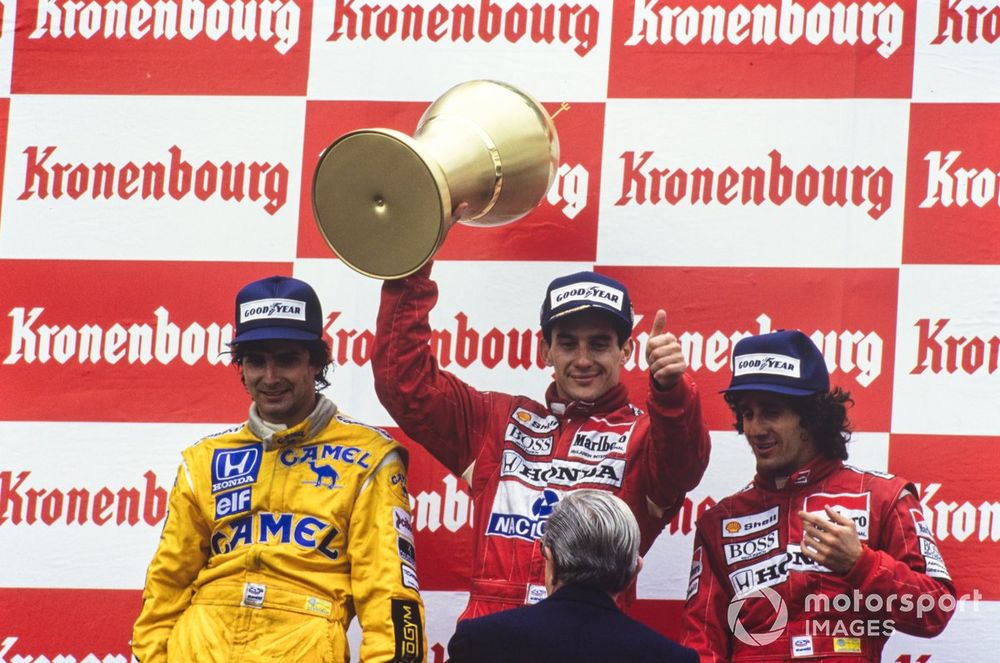
Nelson Piquet, 1st position, celebrates his first victory for McLaren on the podium. Alain Prost, 2nd position, and Nelson Piquet, 3rd position, are alongside.
Photo by: Motorsport Images
The San Marino Grand Prix used to award one of the most peculiar looking trophies to its winner. Decked in gold, the trophy stood on a base that listed all of the San Marino GP victors while the logo of the Automobile Club Bologna – a city nearby to Imola circuit – was placed just above it. The most distinctive feature though was the figure holding a spear that was placed at the top.
This design was used until the fateful 1994 San Marino GP, as a black and silver bowl design became the winner’s trophy from 1995 onwards. One recipient of the gold trophy was Nigel Mansell, who won the 1992 San Marino GP and sold it for £28,800 in an auction in 2023.
1989 Brazilian Grand Prix – Nigel Mansell cuts his finger on trophy
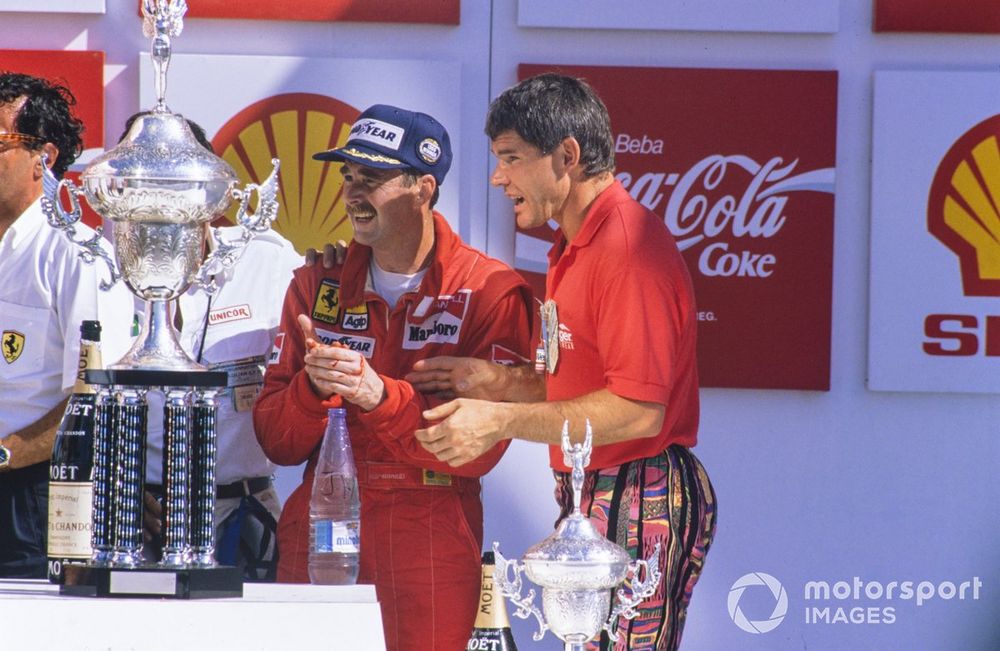
Nigel Mansell requiring attention having cut his hand on the winner’s trophy.
Photo by: Motorsport Images
The trophies given after the Brazilian GP during the 1980s were quite the design, as they featured a black base with six pillars on top providing the framework for a cup which had golden wings. But the story behind it makes the trophy even more wacky.
As Mansell was set to lift the winner’s trophy after claiming victory on his Ferrari debut in 1989, he cut a finger as he placed it on one of the sharp pillars. From observing his reaction, it’s clear that it was sudden pain so Mansell stumbled off the top step to walk to officials on the side of the podium, who then checked the cut.
1989 Mexican Grand Prix – Copper Jug

Winner Ayrton Senna (BRA) McLaren MP4/5 on the podium receives his Trophy Mexican GP
Photo by: Sutton Images
Some very distinctive trophy designs came from the 1989 season, and that year’s Mexican GP was no different. Ayrton Senna dominated from pole to win by 15.6 seconds for McLaren and his reward was a copper jug, which resembled some of the old spittoon designs – an object that dates back to the 19th century, used to dispose of various items like chewing tobacco.
It stood at 35.6cm tall and weighed approximately 1.6kg, while printed on the front was ’Grand Premio de Mexico 1er Lugar Piloto’ which means ‘Grand Prix of Mexico, 1st place’ in Spanish.
But, as Senna won for McLaren, he was unable to keep the original trophy because the British outfit is historically known to keep all of its drivers’ winning silverware. So, the world champion commissioned an exact replica and it is the only Senna/McLaren trophy seen outside of the team’s collection.
Spanish Grand Prix – Tio Pepe Trophy
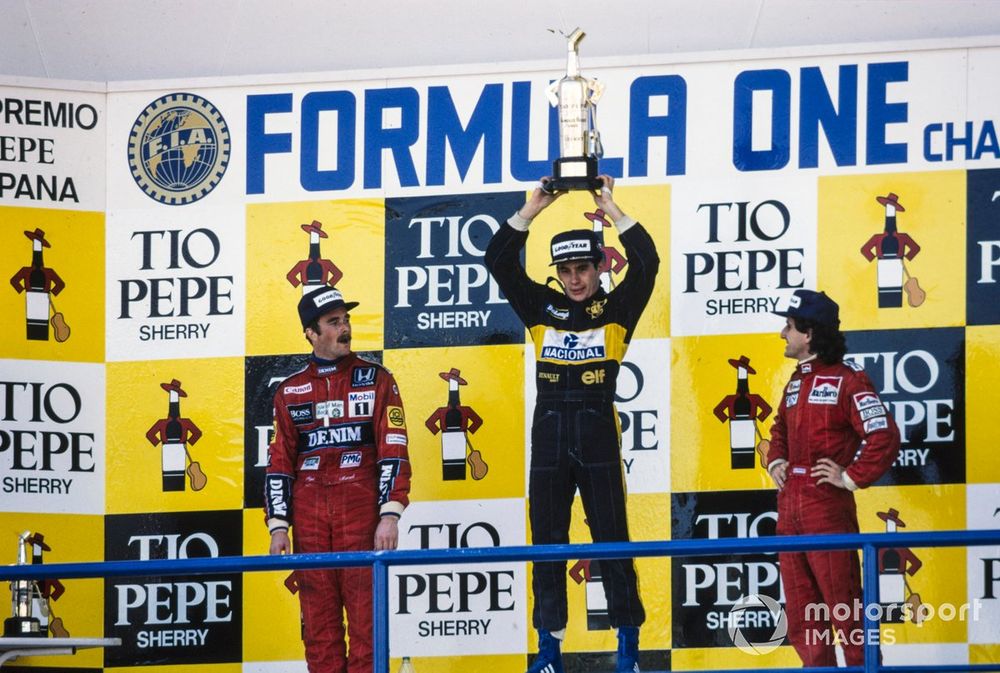
Ayrton Senna celebrates victory on the podium with Nigel Mansell, 2nd position, and Alain Prost, 3rd position.
Photo by: Rainer Schlegelmilch
Jerez hosted the Spanish GP from 1986 to 1990, which saw Senna and Alain Prost win twice with Mansell also claiming a victory. Mansell could easily have had two wins in Jerez though, as the 1986 edition produced an absolute humdinger of a race as the Briton finished just 0.014s behind Senna for the third closest finish – then second – in F1 history.
Jerez’s trophy was also quite the humdinger, as it perfectly represented the city’s association with sherry – a fortified wine made from white grapes that are grown nearby. The trophy was shaped like a sherry bottle with Tio Pepe branding and that was complete with a hat and miniature Spanish guitar.
1993 European Grand Prix – Sega Trophy
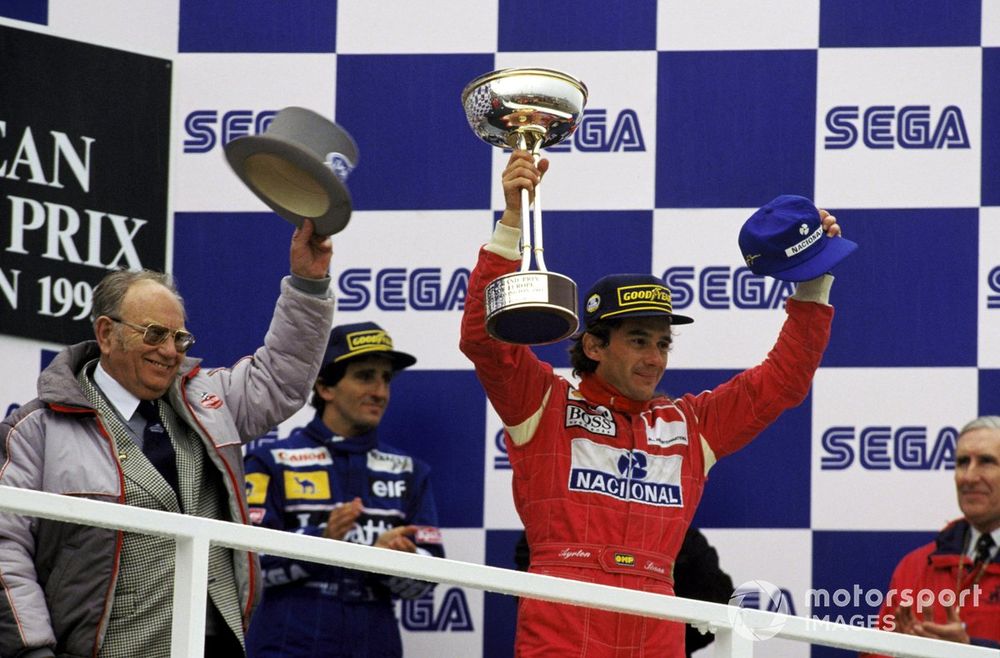
Ayrton Senna (BRA) McLaren (Right) celebrates, on the podium, arguably his greatest ever victory with Tom Wheatcroft (GBR) (Left), celebrating the realisation of his dream of having Donington host a Grand Prix, and Alain Prost (FRA) Williams (Centre), who finished third.
Photo by: Sutton Images
The Sega Trophy is arguably the most famous in F1 history. It was all part of a huge marketing campaign from the Japanese video game company, who was already sponsoring Williams, as Sega’s logo was visible pretty much everywhere at Donington Park from billboards to the podium boarding for the 1993 European GP.
Such an aggressive campaign was matched with an all-time classic, as the race featured that famous opening lap from Senna who climbed from fifth to first in the wet, before winning the grand prix by 1m23.199s despite briefly dropping to second in the middle stages.
So, a picture of Senna lifting the trophy that featured a golden Sonic the Hedgehog – arguably the company’s most famous game character – standing on top of the Sega logo, is one that’s etched into many people’s minds. But McLaren boss Ron Dennis did not like the trophy, so the team banished it to one of its storerooms before placing it on display inside the McLaren Technology Centre in 2020 – even though it wasn’t actually the race’s official winner’s trophy.
Australian Grand Prix – Fosters Trophy
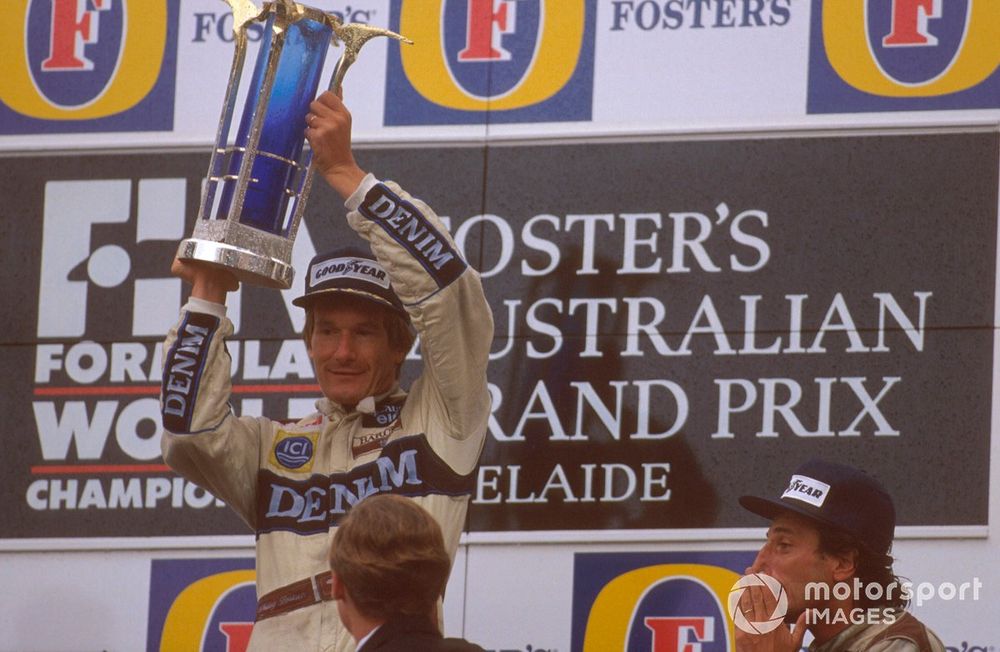
Thierry Boutsen (Williams Renault) 1st position and team-mate Riccardo Patrese on the podium.
Photo by: LAT Photographic
Senna claimed his final F1 victory just seven months after the 1993 European GP at that year’s Australian GP. He won the season finale by 9.2s from pole and was also the last driver to receive the Fosters inspired trophy, as the lager company was the race’s title sponsor from 1986 to 1993.
It’s quite a unique trophy as well, as it depicted a Fosters can with a golden frame around it to add a bit more pzazz. Also on the trophy were the names of each Australian GP victor during that period, as well as the Fosters logo at the top of the blue, circular frame that was placed in the middle of the trophy.
2014 British Grand Prix – Lewis Hamilton unhappy at sponsor trophy
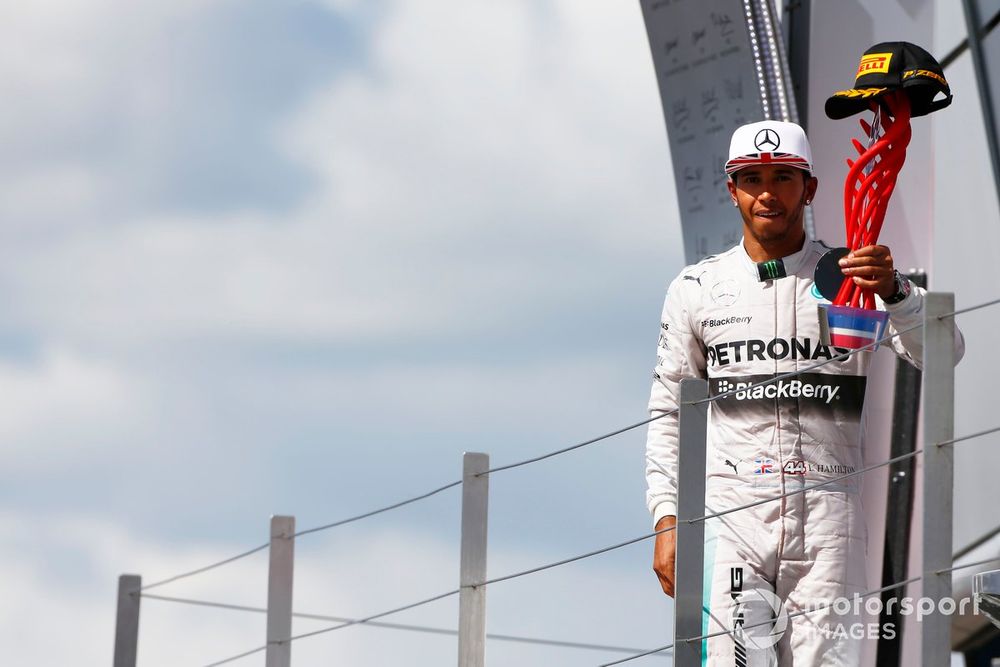
Lewis Hamilton, Mercedes AMG, 1st Position, on the podium with his trophy.
Photo by: Andy Hone / Motorsport Images
It is tradition for the British GP winner to be presented with the golden Royal Automobile Club trophy, which made its debut in the early 1970s. But in 2014, the British GP broke that tradition by awarding a peculiar looking trophy that was shaped like the Santander logo – the bank who sponsored the event.
But race winner Lewis Hamilton was not happy, as he asked “where’s the gold trophy” on the podium. He was eventually awarded it in the post-race press conference, but still voiced further complaints the following year saying many of F1’s trophies no longer have much historical significance behind them.
French Grand Prix – King Kong Trophy
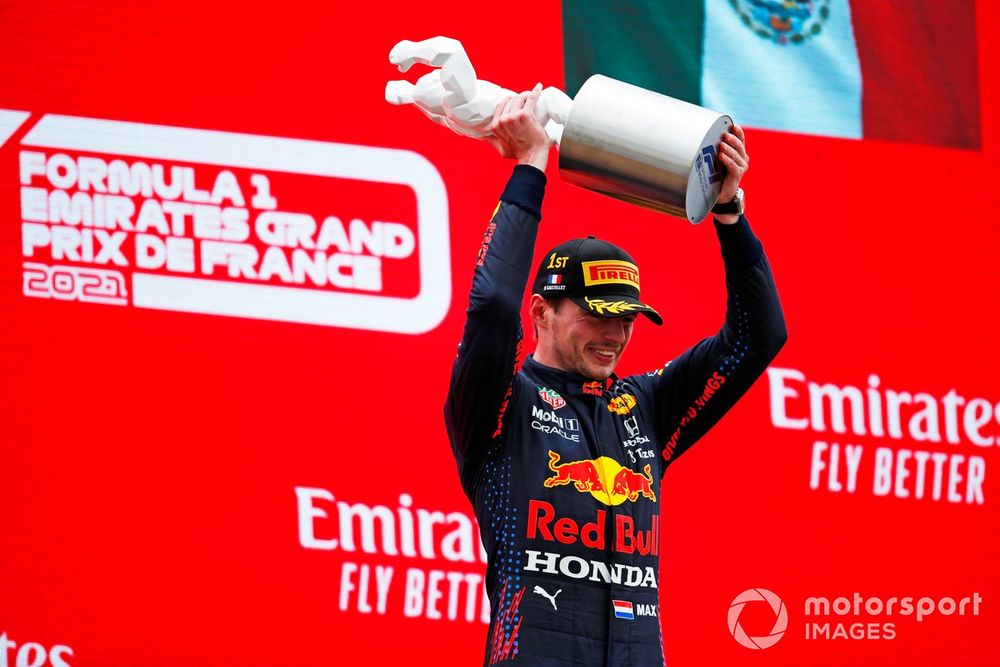
Max Verstappen, Red Bull Racing, 1st position, lifts his trophy
Photo by: Zak Mauger / Motorsport Images
The French GP was home to one of F1’s most wacky and unique trophies from 2018 to 2022, when Circuit Paul Ricard held the event. Drivers were presented a trophy that featured an aggressive looking King Kong, who in some years was white and in others was the colours of the French flag holding a Pirelli tyre.
It was designed by French sculptor and artist Richard Orlinski and is a copy of his full-size King Kong statue placed at the circuit.
2023 Japanese and United States Grands Prix – Kiss-activated Trophies
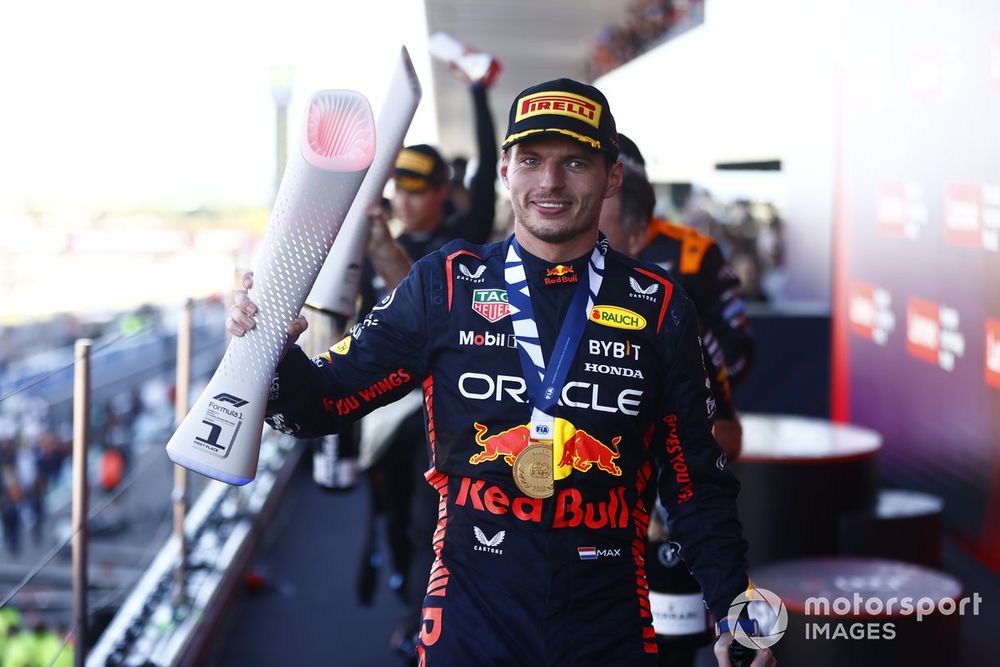
Max Verstappen, Red Bull Racing, 1st position, leaves the podium with his trophy
Photo by: Andy Hone / Motorsport Images
The 2023 Japanese GP was the first to feature a kiss-activated trophy, where it lit up with the colours of the winner’s national flag when kissed. It was designed by Pininfarina and was done as a challenge to find different ways to embed smarter technologies into the trophies.
It was Max Verstappen who won at Suzuka that year, meaning the Dutch flag appeared on the originally all-white trophy when the world champion kissed it. Verstappen also won the United States GP a month later, meaning that – originally black – trophy lit up with the Dutch flag as it too was kiss-activated.
2024 Canadian Grand Prix – AI Inspired Trophy
The AI-designed trophy for the 2024 Canadian GP is a result of F1’s partnership with Amazon Web Services. AWS researched a range of trophies before applying generative AI to form the final design – which was then created by a UK-based silversmith.
It has resulted in a futuristic-looking trophy that features a large base, while further up it has curved, silver sides that all have pointy edges. The middle then features a golden, egg-shaped object that is being held in place by the curved spikes on the side.

